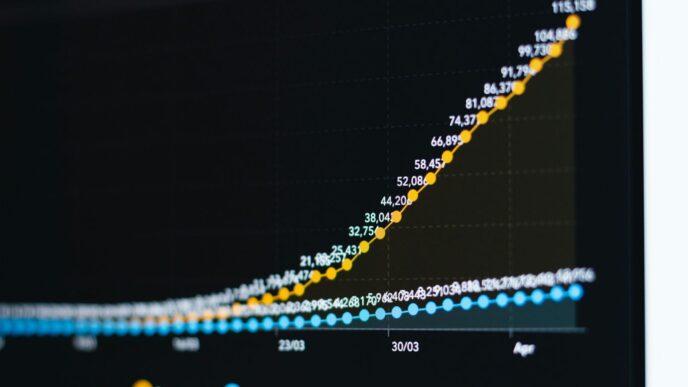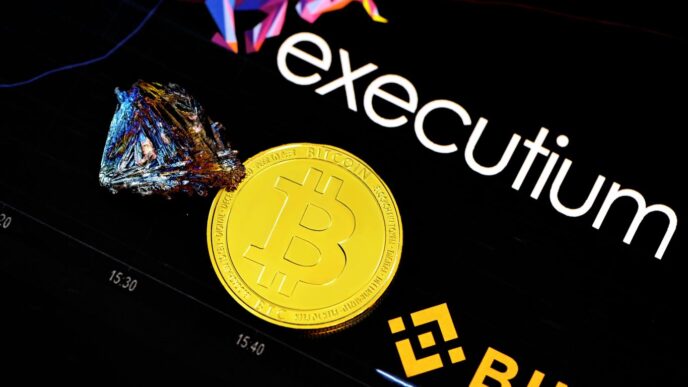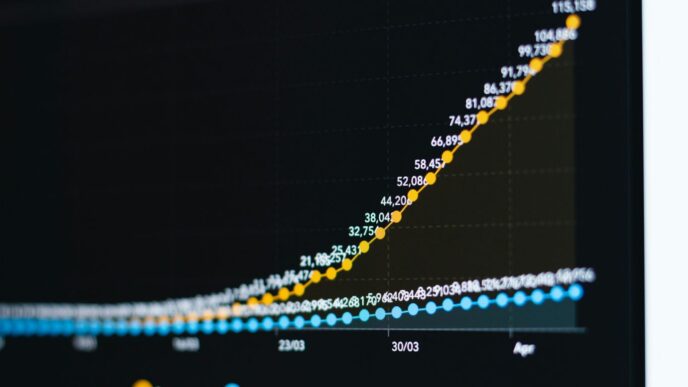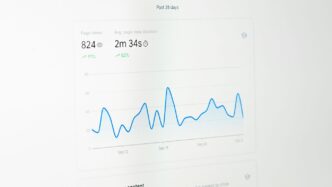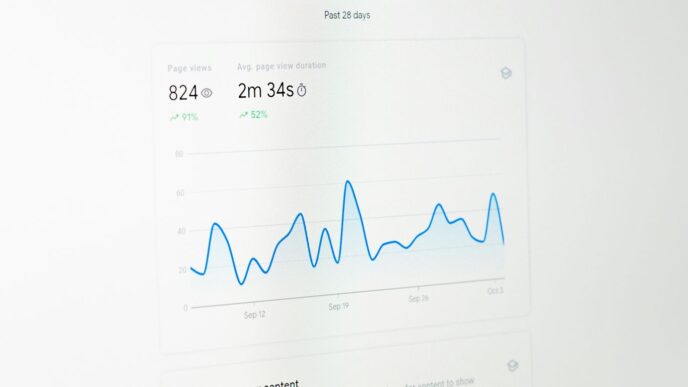The computer of 2030 isn’t just a faster box on your desk. It’s a whole new way of doing things, blending the digital and physical worlds. Think robots that can actually figure stuff out on their own, or computers that understand what you mean, not just what you type. We’re talking about tech that feels more natural, more integrated into our lives. This isn’t science fiction anymore; it’s the path we’re on, and the 2030 computer is at the heart of it all.
Key Takeaways
- Robots are getting smarter, capable of making their own decisions in various fields.
- Spatial computing will make interacting with technology feel more natural by blending digital and physical spaces.
- AI and machine learning are becoming central to how computers learn and operate.
- New technologies like quantum computing and advanced materials will bring huge leaps in processing power and capabilities.
- We need to think carefully about the ethics of AI and protect our data as technology becomes more interconnected.
The Evolving Landscape of the 2030 Computer
The computer of 2030 isn’t just a box on your desk or a slab in your pocket; it’s becoming something much more integrated and intelligent. We’re talking about machines that don’t just follow instructions but actually start to figure things out on their own. This shift is pretty wild when you think about it.
Robots Making Decisions
So, robots are getting smarter. They’re moving beyond just doing repetitive tasks on an assembly line. By 2030, expect robots that can look at a situation, decide what needs to be done, and then do it, all without a human telling them every single step. This is a big deal for places like factories, hospitals, and even delivery services. Imagine a robot in a warehouse that can figure out the best way to pack an order based on its contents and destination, or a medical robot that can assess a patient’s vitals and alert staff to changes. It’s all about making things more efficient and reducing mistakes. The global robotics market is set to boom, with decision-making capabilities being a major driver.
- Reduced human error: Robots can perform tasks with high precision, cutting down on mistakes.
- Increased efficiency: They can operate continuously and optimize processes.
- Adaptability: Advanced robots can adjust to changing conditions in real-time.
Of course, there are hurdles. We need to make sure these robots make good choices, and that they’re safe to work alongside people. Plus, keeping them secure from hackers is a whole new challenge.
Spatial Computing for Natural Interaction
This is where computers start to feel less like tools and more like extensions of our own senses. Spatial computing is all about blending the digital world with the physical one. Think of it like augmented reality, but way more advanced. Instead of just looking at a screen, you’ll interact with digital information that’s layered onto your actual surroundings. This could mean seeing directions overlaid on the street as you walk, or having virtual design elements appear in your living room. It’s about making our interactions with technology feel more intuitive and less like we’re talking to a machine. This technology is predicted to become a massive market.
- Intuitive interfaces: Interacting with digital information becomes as natural as interacting with the physical world.
- Enhanced visualization: Complex data or designs can be viewed and manipulated in 3D space.
- Immersive experiences: Blurring the lines between digital and physical creates new possibilities for work and play.
Artificial Intelligence and Machine Learning
AI and machine learning are the brains behind a lot of these changes. They’re what allow computers to learn from data, recognize patterns, and make predictions or decisions. By 2030, AI won’t just be in our phones suggesting what to watch next; it’ll be deeply embedded in everything from how we shop to how we manage our homes. We’re seeing AI get really good at creating things too, like art, music, and even text. This is changing creative fields in ways we’re only just starting to understand. The demand for computing power to fuel these AI advancements is growing fast, and it’s reshaping industries. Computing power is rising exponentially, and it’s capturing widespread attention.
Transformative Technologies Shaping Tomorrow
We’re on the cusp of some seriously big shifts, thanks to a few key technologies that are really starting to flex their muscles. It’s not just about faster processors anymore; we’re talking about entirely new ways of computing and interacting with the world.
Quantum Computing’s Exponential Power
Think of quantum computing as a whole different ballgame compared to the computers we use today. Instead of just ones and zeros, quantum computers use ‘qubits’ that can be both one and zero at the same time. This lets them tackle problems that are practically impossible for even the most powerful supercomputers right now. We’re talking about things like discovering new medicines by simulating molecules with incredible accuracy, or breaking current encryption methods (and creating new, uncrackable ones).
- Drug Discovery: Simulating complex molecular interactions to find new treatments faster.
- Materials Science: Designing novel materials with specific properties.
- Optimization: Solving incredibly complex logistical and financial problems.
It’s still early days, and building these machines is super tricky, but the potential is mind-blowing. We might see breakthroughs in areas we haven’t even thought of yet.
The Bio Revolution and Genetic Engineering
This is where biology meets technology in a really profound way. Genetic engineering, powered by tools like CRISPR, is moving beyond just research labs. We’re starting to see applications that could change healthcare and agriculture forever. Imagine personalized medicine where treatments are tailored to your specific genetic makeup, or crops that are more resilient to climate change and require fewer resources.
| Application Area | Potential Impact |
|---|---|
| Healthcare | Curing genetic diseases, personalized therapies |
| Agriculture | Drought-resistant crops, increased yields |
| Environmental | Bio-remediation of pollutants, sustainable materials |
Of course, there are big ethical questions here, and we need to be really careful about how we use these powerful tools. But the ability to edit DNA opens up a whole new frontier for improving life.
Next-Generation Materials
Materials science is often overlooked, but it’s the bedrock of many technological advancements. By 2030, we’ll be seeing materials that are lighter, stronger, more conductive, and even self-healing. Think about batteries that last way longer, electronics that are more efficient, or structures that can withstand extreme conditions. We’re talking about things like advanced composites, nanomaterials, and even bio-inspired materials that mimic nature’s own designs. These innovations will be key to making everything from electric vehicles to advanced aerospace components more practical and effective.
Connectivity and Infrastructure Advancements

The way we connect and the systems that support that connection are changing fast. Think about it: by 2030, the internet won’t just be something you access on a screen; it’ll be woven into the fabric of our daily lives. This shift is powered by a few key things.
The Future of Connectivity with 5G and IoT
We’re already seeing the start of this with 5G, but it’s going to get much more widespread. This isn’t just about faster phone downloads, though that’s nice. It’s about creating a super-reliable, low-delay network that can handle a massive number of devices talking to each other all at once. This is where the Internet of Things (IoT) really takes off. Imagine your home appliances, your car, even your city’s traffic lights all communicating in real-time. This interconnectedness could seriously boost how efficiently things run, from how factories operate to how we get healthcare.
- Massive Device Support: 5G can handle way more devices per square mile than older networks, which is key for the explosion of IoT gadgets.
- Low Latency: The tiny delay between sending and receiving information means things like remote surgery or self-driving cars become much more practical.
- Increased Bandwidth: More data can be sent and received, supporting richer experiences and more complex data streams.
Distributed Infrastructure and Hybrid Cloud
Companies aren’t just keeping all their computer power in one place anymore. We’re moving towards a mix of private data centers and public cloud services, often called hybrid cloud. This gives businesses flexibility. They can keep sensitive data on their own systems while using the cloud for things like data analysis or temporary projects. This setup is more resilient; if one part has an issue, others can often pick up the slack. It also means data can be processed closer to where it’s generated, which speeds things up.
Edge Computing for Real-Time Processing
This is a big one, especially with all those IoT devices. Instead of sending every single piece of data back to a central server to be processed, edge computing does some of that work right where the data is created – at the ‘edge’ of the network. Think of a smart camera that can identify a problem on a factory floor and flag it immediately, without waiting for instructions from a distant data center. This is vital for applications that need instant responses. This ability to process information locally is what will make many advanced AI and automation systems truly practical by 2030.
Here’s a quick look at why edge computing matters:
- Speed: Reduces the time it takes to get a result, which is critical for time-sensitive tasks.
- Efficiency: Less data needs to be sent over the network, saving bandwidth and costs.
- Reliability: Systems can keep working even if the main network connection is interrupted.
- Security: Sensitive data can be processed and anonymized locally before being sent elsewhere.
Innovations in Human-Computer Interaction
Think about how we talk to computers now. It’s mostly typing, clicking, and maybe some voice commands. But by 2030, that’s going to feel pretty old school. We’re looking at a future where interacting with technology is way more natural, almost like talking to another person or just moving around in the real world.
Content Creation with Generative AI
Generative AI is changing the game for anyone who makes stuff. Instead of starting from a blank page, you can have AI whip up drafts of text, images, music, or even code based on simple prompts. This isn’t about replacing human creativity, but about giving creators powerful tools to speed up their workflow and explore new ideas. Imagine a writer using AI to brainstorm plot points or an artist generating variations of a character design in minutes. It’s like having a super-powered assistant that can handle the grunt work, letting you focus on the bigger picture and the finer details. This technology is already making waves, and by 2030, it’ll be a standard part of many creative toolkits.
Smart Home Integration and Automation
Our homes are getting smarter, and it’s not just about turning lights on with your voice. By 2030, expect your home to anticipate your needs. Your thermostat might learn your schedule and adjust the temperature before you even get home. Your fridge could tell you when you’re low on milk and add it to your shopping list. This level of automation goes beyond simple commands; it’s about creating an environment that adapts to your lifestyle. Think about systems that manage energy use based on occupancy and time of day, or security systems that can distinguish between a pet and an intruder. It’s all about making daily life smoother and more efficient, with technology working quietly in the background. This kind of smart home tech is becoming more accessible, with many companies working on interoperable smart home devices.
Gaming with Augmented and Virtual Reality
Gaming is one of the areas where AR and VR are really taking off. Forget just looking at a screen; by 2030, you’ll be stepping into the game. Augmented reality will overlay digital elements onto your real-world view, making your living room a battlefield or a fantasy landscape. Virtual reality will completely immerse you in digital worlds, offering experiences that feel incredibly real. This isn’t just for hardcore gamers, either. We’re seeing applications in training, education, and even social experiences. The hardware is getting lighter, more comfortable, and more powerful, pushing the boundaries of what’s possible. The market for these immersive technologies is expected to grow significantly, with projections showing a substantial increase in volume by the end of the decade.
| Technology | Key Features by 2030 |
|---|---|
| Augmented Reality (AR) | Realistic digital overlays, gesture control, real-time environmental interaction |
| Virtual Reality (VR) | High-resolution displays, haptic feedback suits, full body tracking |
| Mixed Reality (MR) | Blending of AR and VR, persistent virtual objects in real space |
These advancements mean that by 2030, interacting with computers won’t feel like using a tool, but more like a natural extension of ourselves and our environment.
Challenges and Ethical Considerations
As we hurtle towards 2030, the tech landscape is getting pretty wild, and with all these amazing new tools comes a whole heap of stuff we need to think about. It’s not just about building cool gadgets; it’s about making sure they’re used right.
Ensuring Ethical Decision-Making in AI
Artificial intelligence is getting smarter, but how do we make sure it makes good choices? We’ve seen AI systems accidentally pick up biases from the data they’re trained on, which can lead to unfair outcomes. For example, facial recognition software might not work as well for certain groups of people. We need to actively work on making AI fair and transparent. This means cleaning up the data we feed it and building systems that can explain how they arrived at a decision. It’s a tough problem, and sometimes technology alone can’t fix it; we might need new rules or just better human oversight. Think about it like this:
- Bias Detection: Developing tools to spot and fix bias in AI models before they cause harm.
- Explainable AI (XAI): Creating AI that can show its work, so we understand why it made a certain recommendation.
- Human-in-the-Loop: Designing systems where people can review and override AI decisions when needed.
Cybersecurity Risks in Connected Systems
Everything is connected these days, right? From your smart fridge to big industrial machines. That’s great for convenience, but it also means more ways for bad actors to get in. A breach in one system could potentially affect many others. We’re talking about everything from personal data being stolen to critical infrastructure being disrupted. Keeping these vast networks secure is a massive undertaking. It’s like trying to guard a city with a million doors and windows – you can’t watch them all at once. The sheer number of devices in the Internet of Things means the potential attack surface is huge.
Data Privacy and Compliance in Decentralized Environments
With more data being generated and processed everywhere, especially with things like edge computing, keeping personal information safe is a big deal. When data isn’t all stored in one central place, it gets trickier to manage and protect. Who owns the data? How is it being used? And how do we make sure companies are following the rules, like GDPR or similar regulations, when data is spread out? It’s a complex puzzle that requires clear guidelines and strong technical safeguards. We need to figure out how to give people control over their information even when it’s not in one easy-to-find spot.
Societal Impact and Responsible Innovation

So, we’ve talked a lot about the cool tech coming our way, right? But what does it all mean for us, as people, and for society as a whole? It’s not just about faster processors or fancier screens. We’ve got to think about how these changes actually affect our lives and communities. The way we build and use technology from here on out will shape our future in big ways.
The Role of Society in Shaping Technology
It’s easy to think of tech as something that just happens to us, but that’s not really how it works. We, as a society, have a huge say in where things go. Think about it: what we demand, what we accept, and how we regulate it all makes a difference. Governments, businesses, and even just regular folks talking about what they want – it all adds up. We need to make sure everyone can get a piece of the pie, not just a select few. Bridging that digital divide is a big deal, so everyone has a shot at using these new tools.
Prioritizing Ethics in Development
This is a huge one. When we’re building things like AI or genetic tools, we can’t just wing it. We need clear rules and a serious commitment to doing things the right way. That means being open about how these things work and making sure they’re actually helping people, not causing harm. It’s about building trust. We need to think about things like fairness in algorithms and making sure that new tech doesn’t accidentally make existing problems worse. It’s a constant conversation, and it needs to involve lots of different voices.
Investing in Sustainability and Green Tech
Let’s be real, our planet is a big concern. The tech we create needs to play nice with the environment. That means looking for ways to make our gadgets and systems more energy-efficient and less wasteful. It’s not just about being good citizens; it’s about building a future that can actually last. We’re already seeing how technology can help with climate change, but we need to keep that momentum going and make sure green tech is a top priority. It’s about making smart choices now so we don’t have bigger problems later. The future of technology depends on how society adopts and governs it. Collaboration between governments, businesses, and communities is crucial to ensure:
- Inclusive Access: Making tech available to all, closing the digital gap.
- Responsible Innovation: Developing AI and biotech with ethical rules, serving humanity.
- Sustainable Practices: Prioritizing eco-friendly tech to fight climate change.
By 2030, technology is projected to contribute significantly to the global economy, showing its transformative potential. But with great power comes great responsibility, and we need to be mindful of the broader effects of technology as we move forward.
Looking Ahead: What’s Next?
So, we’ve talked a lot about what’s coming by 2030, from robots that think for themselves to computers that can do things we can barely imagine right now. It’s pretty wild to think about how much things are changing, and honestly, it feels like we’re just getting started. These new technologies could really shake things up, making our lives easier and maybe even helping us solve some big problems. But it’s not all smooth sailing. We’ve got to be smart about how we use all this new power, making sure it’s fair for everyone and doesn’t cause new issues down the road. It’s a balancing act, for sure. The main thing is that technology is going to keep evolving, and it’s up to all of us to figure out how to make it work for the best.
Frequently Asked Questions
What kind of computers will we have in 2030?
By 2030, computers will be much smarter and more connected. Imagine robots that can think for themselves and computers that understand us through natural conversation, almost like talking to a friend. We’ll also see computers that can blend the digital world with our real surroundings, making things feel more real and interactive.
How will AI change computers?
Artificial Intelligence (AI) will make computers incredibly helpful. They’ll be able to learn from information and make smart choices, helping us with everything from creating art and music to solving complex problems. AI will also help computers understand us better, making them easier to use.
What is quantum computing and why is it important?
Quantum computing is a super-powerful type of computer that works in a totally new way. It can solve really hard problems much, much faster than today’s computers. This could help us discover new medicines, create better materials, and even make our internet safer.
How will we connect to things in the future?
We’ll have even faster internet with 5G and tons of connected devices (IoT). This means our homes, cars, and cities will be smarter and work together more smoothly. Also, computers will be able to process information right where it’s needed, making things super quick and responsive.
What are the biggest worries about future technology?
A big concern is making sure AI makes good, fair choices and doesn’t cause harm. We also need to protect our information from hackers, especially with so many devices connected. Keeping our personal data private and safe will be really important too.
How can we make sure technology helps everyone?
It’s important that everyone can use and benefit from new technology, not just a few people. We need to think about how technology affects our planet and choose options that are good for the environment. Developing technology in a way that is fair, safe, and helps society is key.




